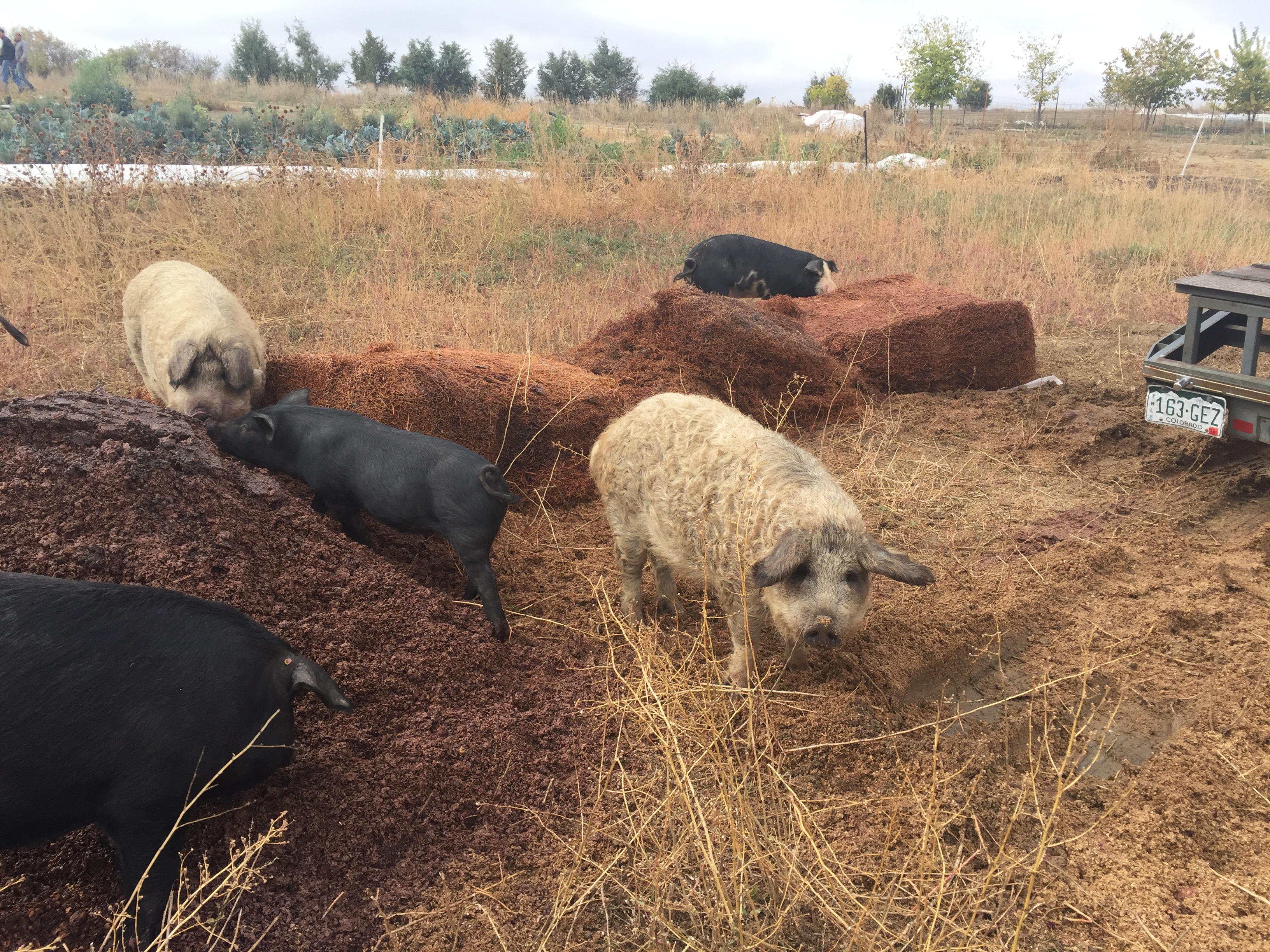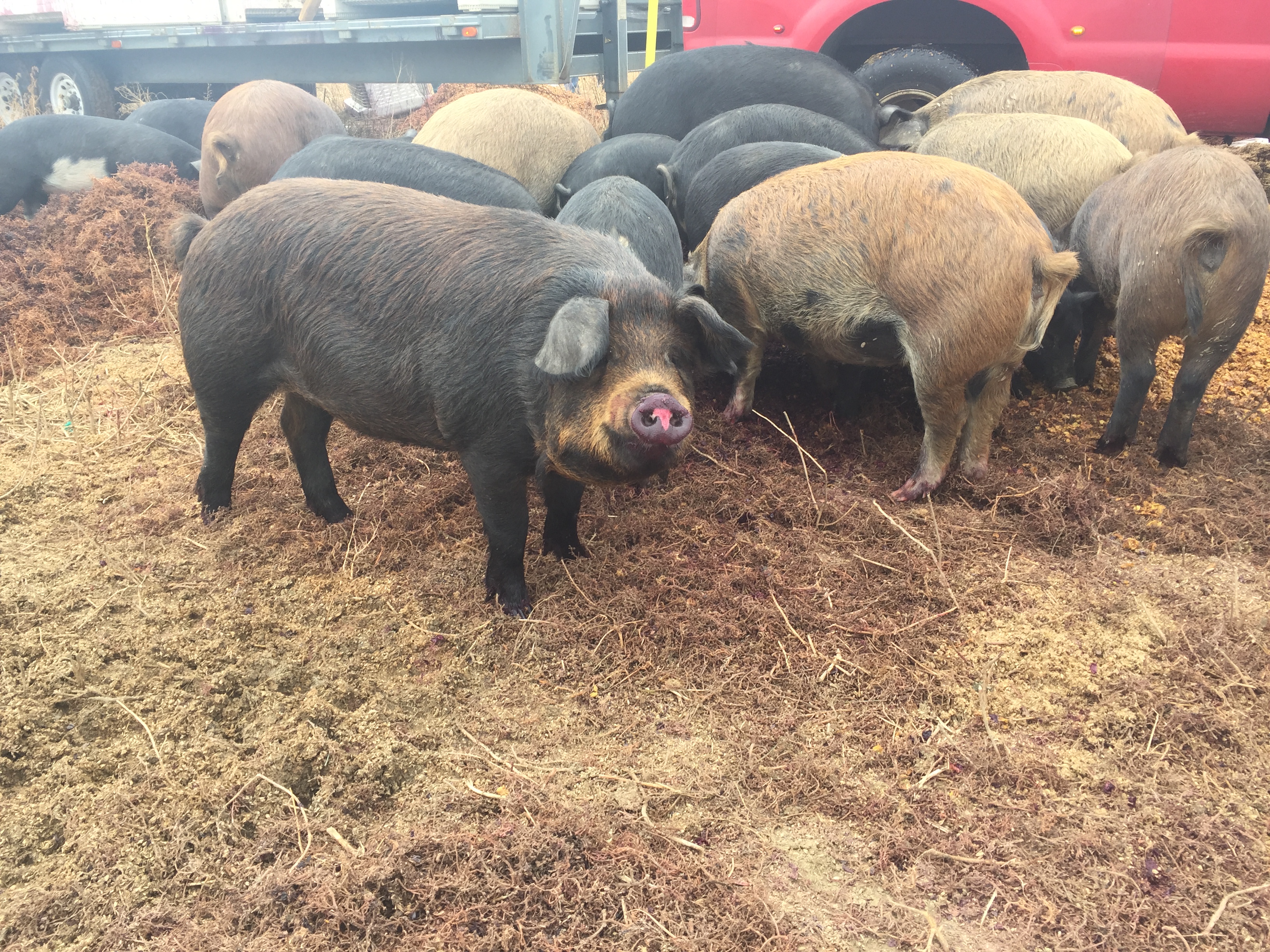On a chilly fall October day near Boulder, Colorado, at Black Cat Farm, a group (or “sounder”) of swine is getting ready to receive an unusual treat. Karen and Doug Kingman are hauling to the farm the remains of the prior weekend’s crush that included 14 tons of Riesling, Cabernet Franc and Chambourcin grapes. Sustainability is a top priority for the Kingman Estates Winery, and no unused parts of the grape are thrown away.

Did you know that grape stems, skins, and seeds contain valuable nutrients? These include antioxidant polyphenols, which help prevent cancer, diabetes, and other diseases, as well as resveratrol – a superhero enzyme that attacks inflammation. Indeed, the nutritional value is so great that some are experimenting with repurposing these items for human consumption.
There’s good reason, however, that grape stems, skins, and seeds do not find their way into a final wine product. These parts of the grape contain tannins and can impart a harsh quality to wine. The winemaking process differs, however, for white versus red wine. With white wine, the grapes are crushed, and the grape stems, skins, and seeds are almost always removed through pressing before fermentation occurs. With red wine, the grapes are crushed and can be destemmed, but the skins and the juice are allowed to ferment together as the skins impart the red color to the wine while the tannins can provide structure and complexity. Later, the red wine skins (and stems and seeds if used) are removed through pressing.
In an unusual twist with this past crush, the Kingmans have decided to press the Chambourcin grapes— normally a base for red wine—prior to fermentation as Doug is planning to create a sparkling wine with them. And as you can see, it’s the pigs at the Black Cat Farm who win out! They get to feast on a banquet of aromatic Riesling and gorgeous inky purple Chambourcin skins as well as the massive pile of grape stems leftover from the 14-ton crush.

And…from the looks of the snout on this fellow, he prefers reds.


